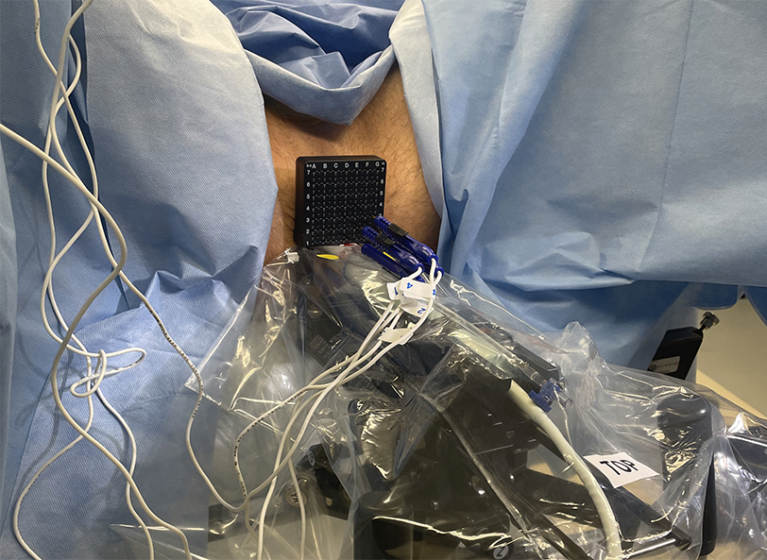
UVA Health urologists are seeing fewer prostate biopsy infections and minimizing prostate cancer treatment side effects by employing 2 innovative techniques:
- Freehand ultrasound-guided transperineal prostate biopsy
- Cancer-ablating NanoKnife® surgical system
The freehand ultrasound-guided transperineal prostate biopsy approach avoids the pitfalls of the traditional transrectal approach — mainly, the risk of infection. Focal prostate cancer therapy using the NanoKnife system is a logical choice for patients seeking treatment because it minimizes the potential side effects of definitive whole-gland treatment.
Sumit Isharwal, MD, a UVA Health urologic oncology expert, adopted these techniques because of the benefits for his patients. “The main advantage of the transperineal biopsy is decreased risk of infection. It also allows us to biopsy the anterior part of the prostate, which is more difficult to do from the transrectal approach,” he notes.
Describing the benefits of the NanoKnife therapy, Isharwal says, “We don't need to remove the whole gland or give radiation treatment to the whole gland in appropriately selected patients. We can target only the area that has cancer and limit the side effects of the treatment.”
Less Risk of Infection & Fewer Perineal Punctures
The transperineal biopsy technique was developed to reduce the 2-3% sepsis risk associated with the transrectal approach. "Historically, the transperineal approach used a template guidance system to help guide the biopsy needle and requires several punctures through the perineum to sample the whole prostate gland for biopsy,” Isharwal says.
The ultrasound-guided freehand approach uses fewer punctures to biopsy the prostate. Only 1 or 2 punctures are needed for the prostate biopsy, so there’s less need for anesthetic and a quicker recovery for the patient.
“The main advantage now, with the freehand approach, is that we use one hole on each side for medium to large prostates. And with smaller prostates, we can actually do them with just one puncture,” says Isharwal. This approach can be performed in the clinic.
“I am currently doing transperineal biopsy in the outpatient surgery center under sedation and in clinic with local anesthesia,” Isharwal says.
Focal Therapy Minimizes Prostate Cancer Treatment Side Effects
NanoKnife focal treatment employs electrical probes to surround and ablate cancerous tissue on the prostate. It doesn’t expose the prostate to heat or radiation.
Suitable candidates for focal treatment have cancer in only one part of the prostate that is visible on imaging, such as MRI or ultrasound.
With this ultrasound-guided technique, UVA Health urologic oncologists can preserve healthy prostate and avoid either removal of the gland or radiating the whole gland to treat the cancer.
“The imaging is key. We need to be able to visualize the tumor beforehand. This tells us how many needles we need to place to effectively ablate the cancer,” Isharwal says.
The probes are placed through the perineal skin into the prostate in the area with cancer. The probes are then connected to the power source and deliver high-voltage electricity to the targeted area, ablating the cancer cells. Patients can go home on the same day as the procedure.
Our First NanoKnife Patient
UVA Health recently performed its first NanoKnife treatment on a 70-year-old patient.
“His biopsy Gleason score was 3+4, PSA 3.7, cancer was limited to the anterior part of the prostate on biopsies, and the lesion was visible on MRI. The rest of the biopsies were negative for cancer,” Isharwal says.
“We have seen him after 1 month and he is doing great. He has no urinary side effects at all.”